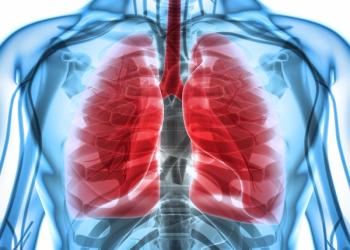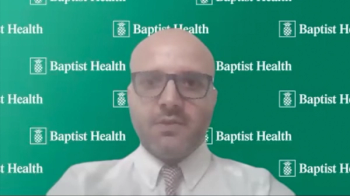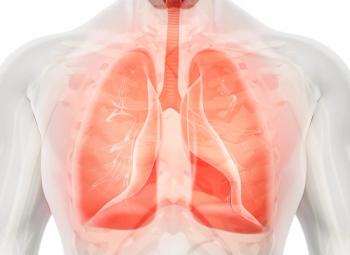
Reliability Found to be Greatest Concern for Patients with Cancer Using Telemedicine
This study revealed that reliability, or patient interpretation of telemedicine as a substitute for in-person visits, of the platform was of the greatest concern to all patients.
An assessment of the usability of virtual care delivery for breast cancer versus non-breast cancer patients at the George Washington Cancer Center (GWCC) revealed that reliability, or patient interpretation of telemedicine as a substitute for in-person visits, of the platform was of the greatest concern to all patients.
The results also suggested that increased age of patients was associated with a significant decrease in satisfaction and comfort.
Looking at patients with breast cancer specifically, researchers found that this patient population was most skeptical that a telemedicine visit would be a suitable substitute for in-person visits, though their opinion of remote visits significantly improved over time. However, it is important to note that patients with breast cancer also experienced increased stress following longer periods of no in-person visits.
“Since March 2020, there has been a major shift in health care in the US towards telemedicine as a result of the [the coronavirus disease 2019 (COVID-19)] pandemic. We wanted to study how cancer patients responded to this change,” Christian Miller, a medical student at the George Washington University Cancer Center, said in a presentation of the data at the 2020 San Antonio Breast Cancer Symposium.
In order to evaluate the usability of virtual care delivery, researchers surveyed patients with cancer. Survey questions included demographics, the Telehealth Usability Questionnaire (TUQ), and additional exploratory questions regarding perceived safety and preferences around telemedicine. Participants were surveyed from May 2020 to October 2020.
The TUQ consisted of 21 questions with 6 subscales, including usefulness, ease of use, interface quality, interaction quality, reliability, and satisfaction/future use. The researchers also wrote their own questions and employed a 5-point Likert scale, with N/A representing 0.
At baseline, researchers sent 230 surveys to patients with all cancers and 84 to patients with breast cancer; 214 patients with all cancers completed the survey and 81 with breast cancer completed the survey. At 1-month, 68 surveys were sent to patients with all cancers and 22 to patients with breast cancer; 49 patients with all cancers completed the survey and 13 with breast cancer completed the survey. Lastly, at 3-months, 40 surveys were sent to patients with all cancers and 11 to patients with breast cancer; 21 patients with all cancers completed the survey and 5 with breast cancer completed the survey.
In total, 217 individuals participated in the study, including 84 patients with breast cancer (38.7%) and 133 patients with non-breast cancer (61.3%).
Regarding TUQ responses over time, the non-breast cancer patients’ feelings regarding the quality of the interface used increased by 0.21 (P = .019). Additionally, reliability of the platform used increased for patients with breast cancer by 0.64 (P = .003).
Of note, the pattern of change over time in reliability scores differed significantly by breast cancer versus non-breast cancer patients (P = .015). However, reliability was the lowest-scoring TUQ subscale at every time point for all cancers studied.
When evaluating the remaining survey responses, the investigators broke the answers into answer categories, including:
- “Safe”: I feel safer using telehealth than coming to in-person visits at this time.
- “Concern”: As a patient with cancer, I am concerned about my immune system at this time.
- “Comfortable”: I am comfortable with the idea of a virtual visit with my doctor.
- “Future use”: I am more likely to use this technology in the future.
- “Outside onc”: I would be interested in using telehealth to communicate with my health care provider outside of oncology.
- “Reduced stress”: Having a telehealth visit at this time reduced my stress around my visit.
When compared with baseline survey responses to responses collected at the 3-month mark, for those with non-breast cancer, “safe” increased by 0.3 (P = .005), “concern” increased by 1.13 (P < .001), “comfortable” increased by 0.37 (P = .002), “future use” increased by 0.44 (P < .001), and “outside onc” increased by 0.48 (P = .038).
For those with breast cancer, “safe” increased by 0.53 (P = .003), “concern” increased by 0.18 (P < .001), “comfortable” increased by 0.43 (P < .001), “future” increased by 0.58 (P < .001), “outside onc” increased by 0.48 (P = .02), and “reduced stress” decreased by 0.58 (P = .006).
According to the investigators, important limitations included the decreasing participant response over time and the limited patient population. However, they hope to achieve more robust longitudinal data analysis through continued enrollment and survey distribution moving forward.
Reference:
Miller C, Leon A, Duffy S, et al. Telemedicine usability for cancer care during the COVID-19 pandemic. Presented at the 2020 San Antonio Breast Cancer Symposium. Abstract # 1192.
Newsletter
Stay up to date on recent advances in the multidisciplinary approach to cancer.



















































































